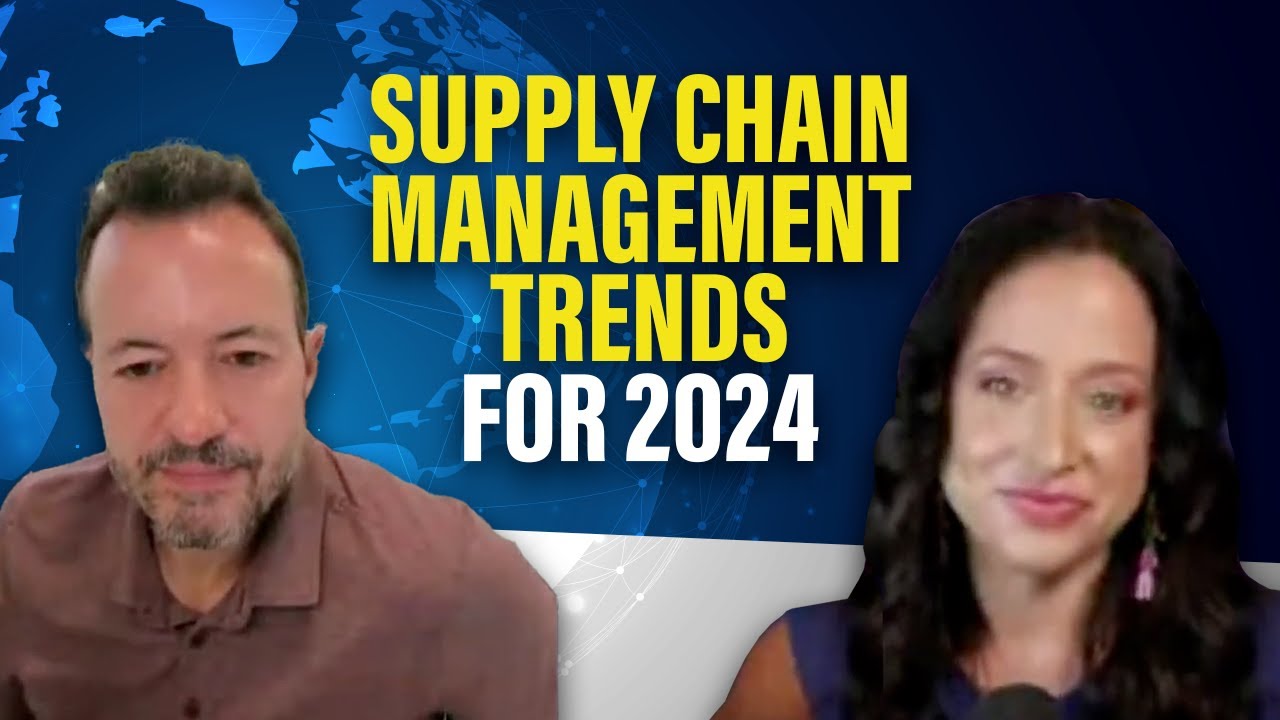Is Blockchain the Key to Achieving Supply Chain Transparency?
Summary
TLDR区块链技术在供应链透明度和安全性方面取得了显著进展。EY的区块链领导者Paul Brody在讨论中指出,区块链已经从试点阶段发展到大规模生产,尤其在透明度和可追溯性方面。目前,区块链不仅用于追踪葡萄酒和疫苗等产品的原材料,还用于创建代币和非同质化代币(NFTs),如意大利啤酒品牌Peyroni为每批啤酒创建的NFT,以实现产品和批次的可追溯性。此外,区块链还开始用于位置追踪,并通过以太坊改进提案(EIP)提出了标准化的元数据基础和URL/URI模型,以支持可变和不可变数据的链接。尽管存在关于区块链能源消耗的批评,但以太坊和Polygon等平台的能源效率远高于比特币,并且正在向权益证明(Proof of Stake)过渡,这将进一步降低能耗。NFTs在供应链中的应用代表了独特资产的所有权,而智能合约则为创建自动化和自主的供应链提供了可能,这将减少手动操作并提高效率。尽管如此,区块链在供应链中的应用仍面临可扩展性、隐私处理和集成现有系统等挑战,但通过二层网络和以太坊2.0的升级,这些问题正在得到解决。
Takeaways
- 📈 区块链技术在供应链透明度和追踪方面取得了显著进展,已经从试点阶段过渡到大规模生产应用。
- 🔍 区块链正在用于追踪各种产品,从葡萄酒到疫苗,包括原材料和成品,这已成为一个庞大的业务领域。
- 🌐 公司正在尝试新的方法,如创建代币和NFT(非同质化代币),例如为每个批次的啤酒创建一个新的NFT。
- 📝 区块链上的数据分为不可变数据和可变数据,不可变数据用于记录历史,而可变数据则通过链下存储定期更新。
- 🔑 尽管区块链记录不可更改,但通过更新URL链接到的链下存储,可以实现对可变数据的持续更新。
- ⚡ 区块链技术,尤其是比特币,因其能耗问题受到批评,但以太坊和其二层网络Polygon的能效比比特币高很多,并且正在向权益证明(Proof of Stake)转变,将进一步减少能耗。
- 🔄 权益证明(Proof of Stake)可能成为工作量证明(Proof of Work)的一个替代方案,尽管它可能有利于已经拥有大量资产的参与者,但系统仍然是相对去中心化的。
- 📦 在供应链跟踪中使用的NFT代表了独特资产的所有权,不仅仅是产品的可追溯性,还包括位置和所有权。
- 💡 智能合约可以自动响应条件变化,实现自动执行任务,如自动重新订购库存,推动供应链的自动化和自主化。
- 🚧 区块链技术在供应链管理中的广泛应用还面临一些障碍,包括提高对可追溯性的接受度、隐私保护的成熟度以及参与者的易用性集成。
- ⏱️ 区块链的扩展性和交易处理速度是过去的问题,但正在通过创建二层网络和以太坊从1.0向2.0的过渡来解决,后者包括分片技术,将大幅增加处理能力和速度。
Q & A
区块链技术在实现供应链透明度方面的现状如何?
-区块链技术在供应链透明度和可追溯性方面取得了很大进展,已经从概念验证阶段发展到大规模生产阶段。目前,区块链被用于从原材料建模到成品跟踪的各个环节,涉及从葡萄酒到疫苗、原材料和食品等多个领域。
区块链技术在供应链管理中已经超越了试点阶段吗?
-是的,区块链技术已经在许多公司中超越了试点阶段,正在全面生产中使用,并且公司正在尝试新的运作方式。
如何通过区块链技术实现产品从生产到分销的每一步跟踪?
-通过创建代币和非同质化代币(NFTs),例如为每个批次的啤酒创建一个新的NFT,可以实现产品批次的可追溯性。此外,还有提议通过以太坊改进提案(EIP)来标准化位置跟踪和数据附加。
区块链上的不可变数据和可变数据是如何区分的?
-区块链上的记录是不可变的,但可以通过链下存储和URL来更新可变数据。这样,可以在区块链上查看不可变的历史数据和当前状态。
区块链和加密货币的能源密集型问题是否得到了解决?
-以太坊比比特币能源效率高90倍,并且正在从工作量证明(PoW)转向权益证明(PoS),这将使其能源效率提高99倍。对于比特币,需要通过可再生能源输入来解决这一问题。
权益证明(PoS)是否会加剧区块链上的中心化问题?
-尽管权益证明可能会让已经拥有大量资产的参与者受益,但以太坊仍然是一个相对去中心化的系统,并且随着二层网络的发展,访问将变得更加平等。
在供应链跟踪中使用NFT代表什么?
-在供应链跟踪中使用NFT可以代表独特资产的所有权,例如啤酒的批次。NFT提供了一种追踪每个批次独特性的方式,有助于健康、安全和可追溯性的管理。
区块链如何帮助创建所谓的自主供应链?
-智能合约可以自动响应条件变化,执行任务,如自动重新订购库存。这可以使得供应链的各个环节,如个别缓冲区和存储位置,通过智能合约实现自主化,从而创建自组织、自动化的自主供应链。
区块链技术在供应链管理中成熟和广泛应用的障碍是什么?
-需要提高对可追溯性的舒适度,改进隐私组件,使更多参与者能够轻松登录和集成,例如EDI和SAP集成。此外,还需要解决规模和交易处理速度的问题。
区块链技术在处理大规模交易和提高交易速度方面有哪些改进?
-通过创建二层网络(Layer 2)和以太坊从1.0向2.0的过渡,以及分片(sharding)的概念,可以大幅提高处理能力和交易速度。
区块链技术在供应链管理中的未来发展如何?
-区块链技术不仅是供应链可追溯性的未来,也是采购交易、多方供应链管理和支付的未来。随着技术的进步和障碍的克服,预计将在供应链管理中发挥更大的作用。
为什么供应链管理需要同时关注可追溯性和隐私?
-可追溯性对于消费者了解产品来源和质量至关重要,而隐私保护则确保了供应链中敏感信息的安全,如库存量和分销点的具体数据,这些信息不需要对所有人公开。
Outlines

This section is available to paid users only. Please upgrade to access this part.
Upgrade NowMindmap

This section is available to paid users only. Please upgrade to access this part.
Upgrade NowKeywords

This section is available to paid users only. Please upgrade to access this part.
Upgrade NowHighlights

This section is available to paid users only. Please upgrade to access this part.
Upgrade NowTranscripts

This section is available to paid users only. Please upgrade to access this part.
Upgrade NowBrowse More Related Video

Cadena de Suministro Agroalimentaria: Cómo Mejorar la Transparencia y la Trazabilidad

Blockchain solutions to address challenges caused by COVID-19

Supply Chains 2022: Problems and Solutions

ASCM's Top Trends in Supply Chain for 2024

How Can Supply Chains Embrace Sustainability?

Supply Chain Management Trends for 2024 and Beyond
5.0 / 5 (0 votes)
